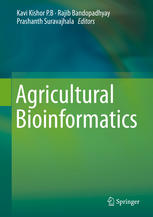

Most ebook files are in PDF format, so you can easily read them using various software such as Foxit Reader or directly on the Google Chrome browser.
Some ebook files are released by publishers in other formats such as .awz, .mobi, .epub, .fb2, etc. You may need to install specific software to read these formats on mobile/PC, such as Calibre.
Please read the tutorial at this link: https://ebookbell.com/faq
We offer FREE conversion to the popular formats you request; however, this may take some time. Therefore, right after payment, please email us, and we will try to provide the service as quickly as possible.
For some exceptional file formats or broken links (if any), please refrain from opening any disputes. Instead, email us first, and we will try to assist within a maximum of 6 hours.
EbookBell Team

4.0
6 reviewsA common approach to understanding the functional repertoire of a genome is through functional genomics. With systems biology burgeoning, bioinformatics has grown to a larger extent for plant genomes where several applications in the form of protein-protein interactions (PPI) are used to predict the function of proteins. With plant genes evolutionarily conserved, the science of bioinformatics in agriculture has caught interest with myriad of applications taken from bench side to in silico studies. A multitude of technologies in the form of gene analysis, biochemical pathways and molecular techniques have been exploited to an extent that they consume less time and have been cost-effective to use. As genomes are being sequenced, there is an increased amount of expression data being generated from time to time matching the need to link the expression profiles and phenotypic variation to the underlying genomic variation. This would allow us to identify candidate genes and understand the molecular basis/phenotypic variation of traits. While many bioinformatics methods like expression and whole genome sequence data of organisms in biological databases have been used in plants, we felt a common reference showcasing the reviews for such analysis is wanting. We envisage that this dearth would be facilitated in the form of this Springer book on Agricultural Bioinformatics. We thank all the authors and the publishers Springer, Germany for providing us an opportunity to review the bioinformatics works that the authors have carried in the recent past and hope the readers would find this book attention grabbing.